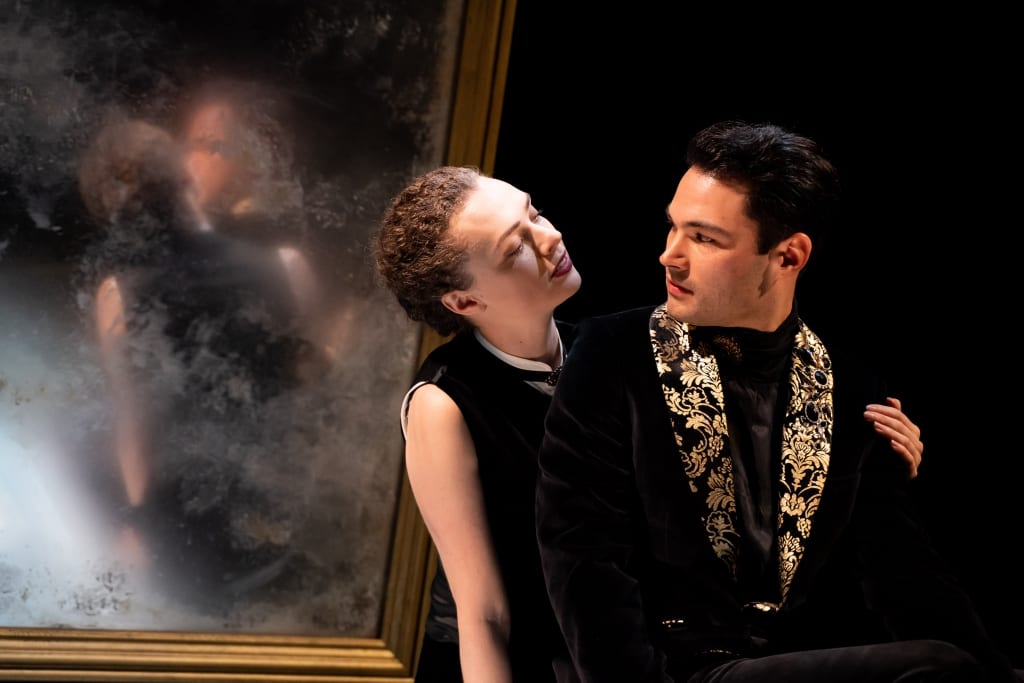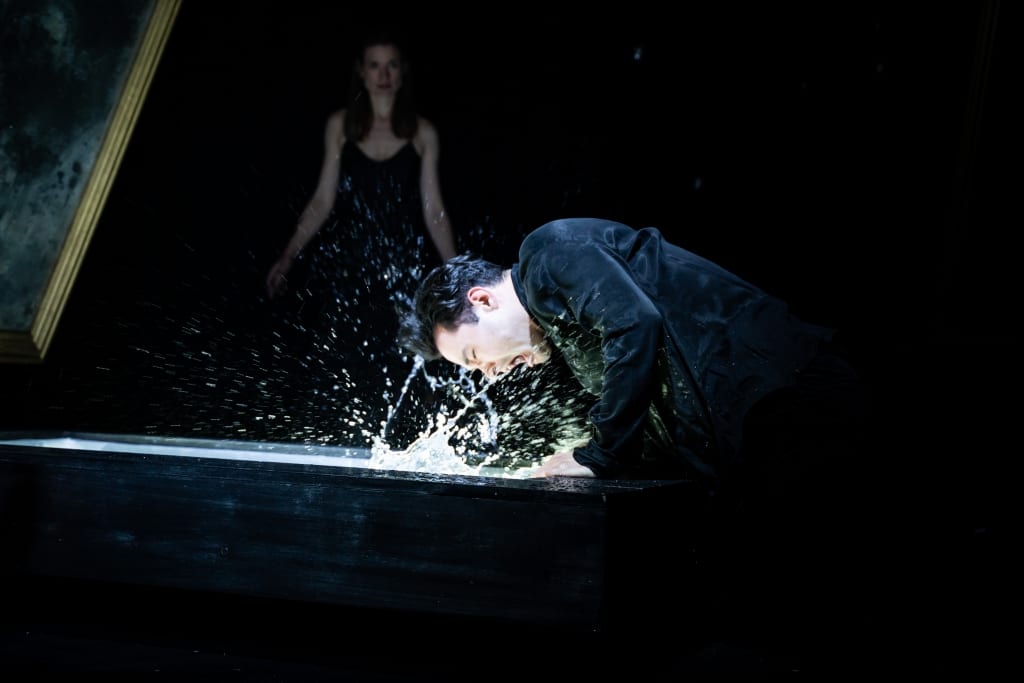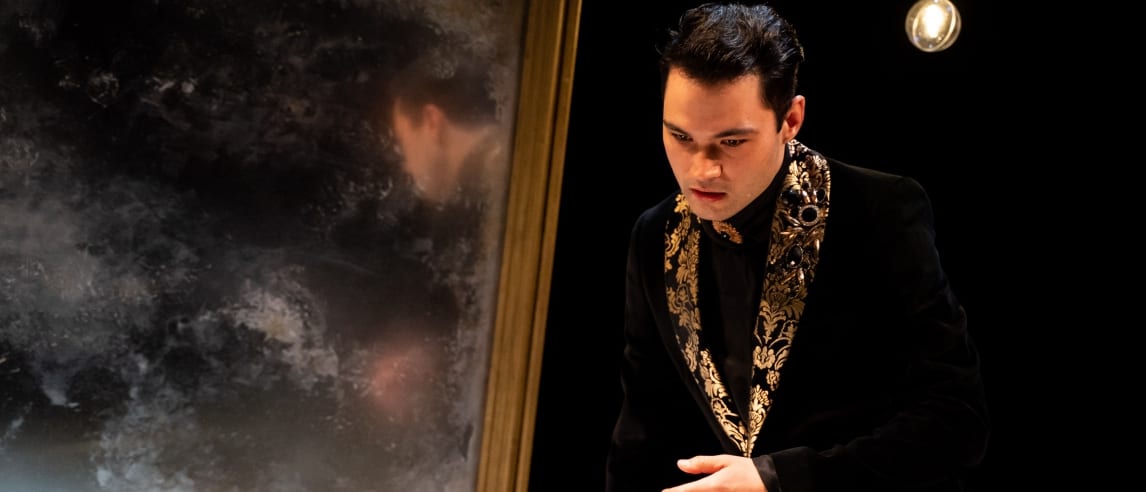Jermyn Street Theatre’s production of Pictures of Dorian Gray represents everything I love about the theatre. Working with clean simplicity and limited resources, this talented and passionate group have brought an unpretentious sophistication to this poignant adaptation of Oscar Wilde’s famous story.
Pictures of Dorian Gray tells the story of Dorian, a beautiful young man, who gives up his soul to debauchery. Dorian makes a bargain to keep his youth and beauty, while a portrait of him ages and changes to show the true impact of his cruelty and depravity; his true face.
The cast is made up of four actors, who each take a different role at each performance. Sometimes this device of interchanging actors can result in an under-rehearsed, barely competent production. This was most definitely not the case here, with each actor showing an exquisite sensitivity to the other parts that can only come from intensive rehearsal of each actor combination.
On the evening I saw the production, Stanton Wright, playing Dorian, was wholly convincing as the cruel and merciless degenerate. While the whole cast was excellent, it was Augustina Seymour who shone as the amoral Henry Wotton, wielding an utterly toxic influence on Dorian. Augustina Seymour delivered some of Oscar Wilde’s wittiest lines with such acerbic ennui that one couldn’t help loving her, despite her toxicity.

Sometimes the casting of women in men’s roles can be a bit of a gratuitous publicity stunt, but in this case, having both Henry Wotton and Basil Hallward played by women brought some new and satisfying insights to the dynamic between the characters and seemly wholly appropriate.
As with all the best theatre, every aspect of this production seemed to play a critical role in telling the story. To that end, I would be remiss if I didn’t mention the exquisite sound design; beautiful music and appropriate effects that didn’t dominate or overwhelm but enhanced at each stage. Similarly, the minimalist set design and carefully crafted costumes contributed to the story telling. This attention to detail was especially important in the close confines of the Norrington Room in Blackwell’s Bookshop, where the front row of the audience is often only inches away from the actors.
There was one aspect of the performance that I felt could have been improved; the need for moments of repose. There are two pivotal points in the story that would have benefited from allowing the audience to catch their collective breath, in silence. The first is when Basil first sees the changed portrait of Dorian. The audience needed to see Basil pause, to use silence to enhance the horror of her reaction. The second point was when Dorian finally regrets his cruel debauchery; a moment of silent realisation would have enhanced the pathos. Without allowing the audience to absorb the impact of these two moments with silent pause, the performance felt frantic at these points, to its detriment.
The decision of the production team not to have an interval in the 90-minute performance was the right one. An interval would have fatally released the carefully built up tension and interrupted the flow in a way that would have damaged the experience.
By bringing the Jermyn Street Theatre’s production of Pictures of Dorian Gray to Oxford, the Creation Theatre has done Oxford a great service. Pictures of Dorian Gray finishes on 27 July 2019, and Oxford is the final destination of its tour. If you want to see a small contemporary theatre at its creative best, then this is the production for you.


